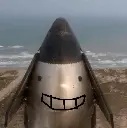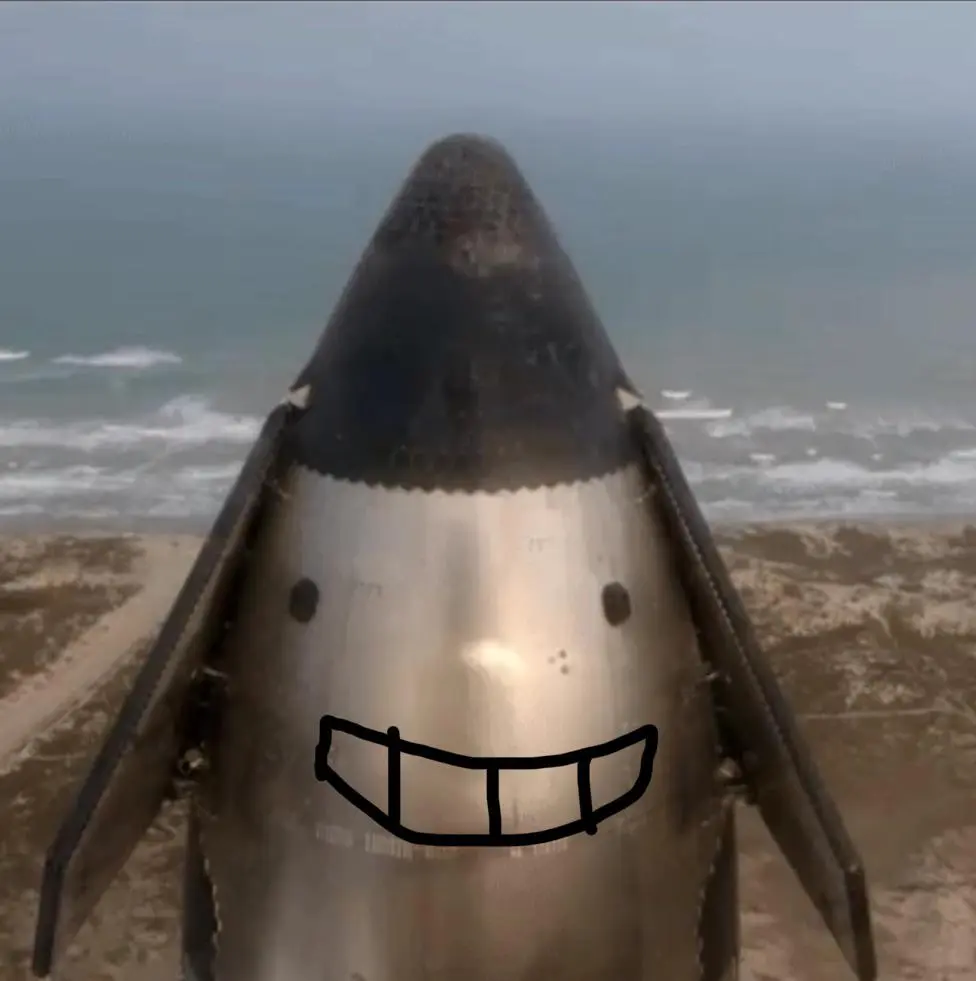Alt accounts that are also me:
Loss of signal from ship.
Ship is spinning out of control. Only 2/6 engines firing, both R-vacs, which can't gimbal.
Successful booster catch!
Booster landing burn.
Boostback burn shutdown.
MECO and stage separation. Ship engines look good (6/6), 11/13 boostback engines firing, two out on the outer ring.
Looks like we have 33 good engines so far.
Countdown is holding at T-40 seconds.
Edit: Countdown hold released!
https://x.com/SpaceX/status/1897775360223146433
The Starship team is go for prop load. The launch webcast will go live ~30 minutes before liftoff
New launch thread is up:
Starship Flight 8 Launch Thread (Take two!)
NSF are live with pre-launch coverage: https://www.youtube.com/watch?v=7kzdUmBIUus
Tank farm is starting to spool up in preparation for propellant loading.
Starship Flight 8 Launch Thread (Take two!)
Well folks, it's time for the second launch of Starship version 2, as well as another booster RTLS and chopsticks catch attempt! Let's hope the ship fares better this time!
This follows a launch attempt earlier this week which was scrubbed due after a prolonged hold in the countdown while the teams worked multiple issues on the booster, ship, and GSE.
| Scheduled for (UTC) | 2025-03-06 23:30 | | --- | --- | | Scheduled for (local) | 2025-03-03 17:30 (CDT) | | Launch Window (UTC) | 2025-03-03 23:30 to 2025-03-04 00:30 (60 minutes) | | Launch site | Pad A, SpaceX Starbase, TX, USA. | | Booster | B15 | | Ship | S34 | | Booster landing | Chopsticks catch at Pad A or soft water landing in Gulf of Mexico | | Ship landing | Indian Ocean |
Webcasts
| Stream | Link | | --- | --- | | Space Affairs | https://www.youtube.com/watch?v=wQG053ogu20 | | Everyday Astronaut | https://www.youtube.com/watch?v=edUNsegCqQs | | Spaceflight Now | https://www.youtube.com/watch?v=tUnbnm7OKCw | | NASASpaceflight | Stakeout stream, Launch stream | | LabPadre | https://www.youtube.com/watch?v=Yng6SV8yO0Y | | The Launch Pad | https://www.youtube.com/watch?v=4rY9T2iLtfY | | VideoFromSpace | https://www.youtube.com/watch?v=32Z1ZUxxObs | | SpaceX | https://x.com/SpaceX/status/1897438948458189156 | | The Space Devs | |
Stats
Sourced from NextSpaceflight and r/SpaceX:
☑️ 2nd launch of Starship version 2
☑️ 2nd Starship Full Stack launch this year, 8th overall
☑️ 2nd launch from Pad A this year, 8th overall
☑️ 49 days, 0:53:00 turnaround for this pad
☑️ 28th SpaceX launch this year, 478th overall
Mission Details 🚀
-
SpaceX website (current). Highlights:
-
"flight will fly the same suborbital trajectory as previous missions and will target objectives not reached on the previous test"
-
"Starship will deploy four Starlink simulators, similar in size to next-generation Starlink satellites"
-
Another in-space raptor relight is planned
-
"A significant number of tiles have been removed from Starship to stress-test vulnerable areas across the vehicle."
-
"Multiple metallic tile options, including one with active cooling, will test alternative materials for protecting Starship during reentry."
-
"non-structural versions of Starship’s catch fittings are installed to test the fittings’ thermal performance"
-
"flight also includes the launch, return, and catch of the Super Heavy booster"
Link to Starship Dev thread
Thanks. Might post a new launch thread this afternoon.
Is one launch considered “operational”?
By SLS standards, yes :)
In the original post on rpgmemes, someone suggested rolling it on a glass table and crawling underneath to check the result.
Piefed apparently implemented something similar to proposal 3
Have they? Blaze linked to a thread on the implementation of Piefed "feeds", which is a form of Proposal 2 (multi-communities). Have they also implemented Proposal 3 (communities following each other) as well?
I really hope the devs consider Proposal 3, as it seems like the solution which best fixes fragmentation.
Done! :)
What next?
What if we choose @[email protected]?
Thanks for sharing. I just posted a version of your usual comment, though I did recommend a different app instead of Voyager... :)
About #1 (merging communities): to a certain extent users already do this. Nothing stops you from locking
[email protected]with a pinned thread like "go to[email protected]".
If you aren't already the moderator of n-1 communities on a multitude of instances, there are some pretty significant challenges:
- Find all the communities on a given topic (easy)
- Convince people that consolidation is a good idea (difficult)
- Get people, many of whom are reluctant to see a community on their home instance locked, to decide on a which community to switch to (sometimes impossible)
- Contact the moderators (or the admins, if the mods are inactive) of each of the
n-1communities and get them to lock each community, with appropriate links to the decided upon community (tedious)
It's a right pain-in-the-ass to do properly, and I've had many more failures than I've had successes.
CSO-3 launch thread! (Take two!)
Welcome everyone! It's time for the first operational launch of Ariane 6!
This follows a previous launch attempt earlier in the week which was scrubbed due to GSE issues.
| Scheduled for (UTC) | 2025-03-06 16:24 | | --- | --- | | Scheduled for (local) | 2025-03-06 13:24 (GFT) | | Launch site | ELA-4, Guiana Space Centre, French Guiana | | Launch vehicle | Ariane 62 | | Payload | CSO-3 | | Mission success criteria | Successful launch and deployment of payloads into Sun-Synchronous Orbit |
Livestreams
| Stream | Link | | --- | --- | | ESA | https://www.youtube.com/@EuropeanSpaceAgency/streams | | Arianespace (English) | https://www.youtube.com/watch?v=yvvUCkAUqvI | | Arianespace (Français) | https://www.youtube.com/watch?v=I-45oYBZHOs | | Space Affairs | https://www.youtube.com/watch?v=hAEVfzW5xWc | | The Launch Pad | https://www.youtube.com/watch?v=gsbYwkOcy6M |
Stats
☑️ 1st Ariane 6 mission of 2025, 2nd overall
☑️ 1st Arianespace mission of 2025, 300th overall
Payload info
> The French CSO (Composante Spatiale Optique) high-resolution reconnaissance satellites are the optical space component of the MUSIS program that will replace the current Hélios 2 military observation satellites. > > CNES, the French space agency, has notified Astrium that the DGA (Direction Générale de l'Armement), the French arms procurement agency, has awarded the company a 795€ million contract for two satellites for the CSO program. The contract also includes an option for a third satellite. > > As the prime contractor for the CSO satellites programme, Astrium will provide the agile platform and avionics, and will also be responsible for the integration work, testing, and delivery of the satellites to CNES. Thales Alenia Space will provide Astrium with very high-resolution optical instruments.
Please feel free to post updates and questions in the comments!
Yes, we are about to be treated to a second lunar landing in a week
“Of course, everybody’s wondering, are we gonna land upright?”…
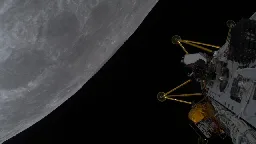
Public Consultation Begins for New Microlauncher Launch Site in French Guiana
NASA has yet to restore communications with a lunar science spacecraft launched last week, keeping it from completing its mission as originally planned.
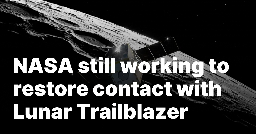
AST SpaceMobile’s plan to create a jointly owned European satellite operator for direct-to-smartphone services comes at a pivotal moment in the region’s push for greater space autonomy.

RIP B1086


Just Read The Instructions has pulled into Port Canaveral, carrying the remains of B1086.
Source: Gav Cornwell / NSF: https://bsky.app/profile/space-offshore.com/post/3ljnokgpgvk2s
> Rough Bahamas Cruise for Falcon 9...
Roll a D327 for me


Matt Parker recently posted a video on the distribution of dimples on golf balls: Golf balls: how many holes in one?
Some golf balls use Goldberg polyhedra, others use... not Goldberg polyhedra.
SpaceX is back with another active week, with five Falcon 9 rockets from two different launch sites expected to launch just this week, as well as Rocket Lab's Electron rocket and the Curie kickstage also preparing for flight.
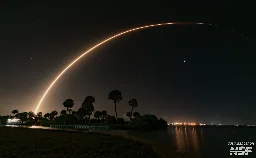
Japanese microgravity services startup ElevationSpace has become the first customer in Asia for Germany’s Isar Aerospace, which now only needs a launch license to debut its two-stage Spectrum rocke…

NASA selected Firefly Aerospace to launch a trio of Earth science smallsats that will study the formation of storms.
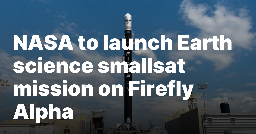
Isar Secures New Launch Contract as it Prepares for Spectrum Debut
> German rocket builder Isar Aerospace has signed a launch services agreement with Japanese in-space logistics company ElevationSpace, securing a Spectrum rocket flight for the AOBA re-entry demonstrator.
> As the company prepares for Spectrum’s inaugural flight, it has secured a new customer for the rocket. On 4 March, ElevationSpace announced that it had booked a Spectrum flight scheduled for the second half of 2026. The rocket will carry the company’s AOBA re-entry demonstrator, which will serve as an initial test of the company’s ELS-R “space utilization and recovery” vehicle.
Industry leaders from Blue Origin, SpaceX and ULA call for modernization of launch facilities to increase capacity

The company is a contender in the Space Force’s Resilient GPS program, an initiative aimed at augmenting the existing GPS constellation with smaller and lower-cost satellites

Butch Wilmore says Elon Musk is “absolutely factual” on Dragon’s delayed return
“We came up prepared to stay long, even though we plan to stay short.”…
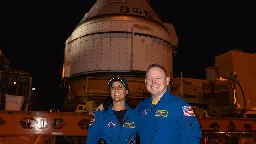
> On Tuesday Wilmore, Williams, and Hague participated from orbit in a news conference with reporters. What is notable about the news conference is that it marks the first time any NASA official—a handful of previously scheduled media availabilities have been canceled—has been on the record with media since the politicization of Crew 9's return and Musk's call to deorbit the space station early. > > ... > > Q. Elon Musk said he made an offer to bring Butch and Suni home last year, but it was denied by the White House. Is this true? > > Wilmore: I can only say that Mr. Musk, what he says, is absolutely factual. We have no information on that, though, whatsoever; what was offered, what was not offered; who it was offered to, how that process went. That's information that we simply don't have. So I believe him. I don't know all those details, and I don't think any of us really can give you the answer that maybe that you would be hoping for.
Has anyone implemented automatic image compression?
Disclaimer: I'm not an instance admin, just a user. I hope it's okay to post here.
Problem
I had several photos which wouldn't post for some reason. After poking around a bit, I found out that my home server has an upload size limit of 5 MB.
Now, an upload size limit is perfectly reasonable. Storage is expensive, and Lemmy is primarily designed for link aggregation and discussion, not file hosting.
However, the way Lemmy currently behaves when it encounters a large file is not ideal, and varies depending on the app/UI.
At best, you get a cryptic error message like {"data":{"msg":"Exceeded maximum dimensions","files":null},"state":"success"} or {"data":{"files":null,"msg":"Too many pixels"},"state":"success"}, and at worst, your webpage/app stalls for an indefinite amount of time.
Solution?
Obviously, it would be prudent to improve the comprehensibility of the error messages, but if there were a way to automatically compress large images to below the size limit, that would eliminate the error messages in the first place.
I believe most instances use Pict-rs to host images, is that correct?
I came across these discussion threads in the Lemmy and Pict-rs source code repositories:
- Allow resize to be set in config to reduce max image size, pictrs does support this #2416
- Support pre-processing uploaded media #3
- support resizing to a maximum area #6
Has anyone implemented automatic image compression on their Lemmy instance? If so, would they be willing to share their methods with other instance admins?
This feature would make things smoother for users, especially for new users who might not be aware of the upload size limit and just think "Lemmy doesn't work, I guess I'll go back to Reddit".
What if the wise men kept walking after Jesus’s birth?

YouTube Video
Click to view this content.
Original static webpage version: https://what-if.xkcd.com/25/
What are the best enhancement tools for Lemmy?
Share your favourite Lemmy enhancement tools in the thread below!
Perhaps we can compile a list for new users.

